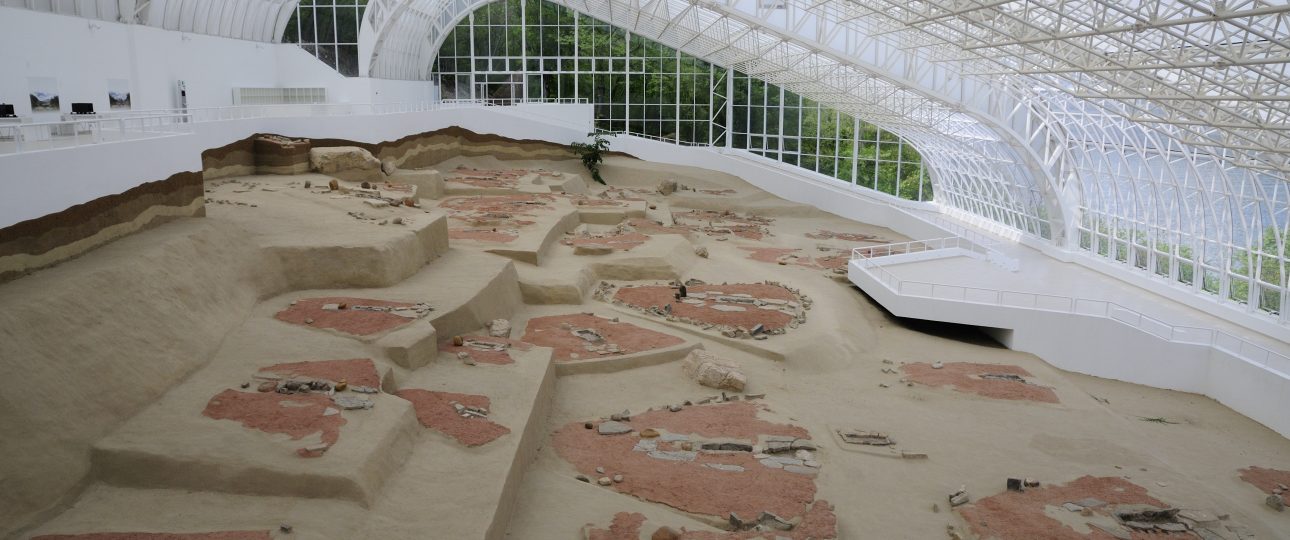Lepenski Vir: An Archaeological Wonder in Serbia
History and Significance
Lepenski Vir is a remarkable archaeological site located on the right bank of the Danube River in eastern Serbia, within the Iron Gates gorge. This site, discovered in 1960, dates back to the Mesolithic period, around 9500 to 6000 BC, and later transitioned into the Neolithic era. It offers a fascinating glimpse into one of Europe’s earliest known civilizations.
The site is renowned for its unique stone sculptures, which depict human faces with fish-like bodies. These sculptures are not just artistic expressions but also provide insights into the spiritual and cultural practices of the time. Lepenski Vir was likely a religious and social hub, evidenced by the communal living structures and organized ritual spaces discovered there.
Exploring Lepenski Vir
Best Time to Visit
Plan your visit during spring or autumn for the most pleasant weather. The months from April to June and September to October offer comfortable temperatures and fewer crowds, allowing for a more intimate exploration of the site.
How to Get There
Lepenski Vir is situated near the village of Boljetin, close to Donji Milanovac. To reach this archaeological treasure, you can travel from Belgrade by bus or car to Donji Milanovac. From there, a short drive will take you to the site. The journey offers scenic views of the Danube and the surrounding landscape.
Local Transportation
Once at Lepenski Vir, the site is easily navigable on foot. The area is well-maintained with clearly marked paths, making it accessible for visitors. Wear comfortable walking shoes to fully enjoy the experience.
Highlights and Attractions
As you explore Lepenski Vir, several features stand out:
- The Stone Sculptures: These sculptures are a testament to the artistic skill of the ancient inhabitants. Each piece tells a story, offering a window into the lives and beliefs of these early people.
- The Sacred Area: This part of the site includes remnants of an ancient shrine, believed to have been central to religious activities. The intricate carvings here hint at the complex rituals that once took place.
- The On-Site Museum: The museum provides a deeper understanding of Lepenski Vir’s history. It houses a collection of artifacts and detailed explanations of the archaeological findings.
- The Danube River: The site is beautifully set against the backdrop of the Danube. Take a moment to enjoy a peaceful walk along the riverbank and appreciate the natural beauty that complements this historical site.
Practical Information
- Lepenski Vir dates back to the Mesolithic period, around 9500 to 6000 BC, transitioning into the Neolithic era.
- The site is famous for its stone sculptures depicting human faces with fish-like bodies.
- It served as a religious and social center, with evidence of communal living and organized rituals.
- The best time to visit is during spring and autumn, from April to June and September to October.
- The nearest town is Donji Milanovac, accessible by bus or car from Belgrade.
- The site is easily explored on foot, with well-marked paths for visitors.
- Key attractions include the stone sculptures, the sacred area, the on-site museum, and the scenic Danube River.





Hi,
We’ll be in Donji Milanovac for 1 day in April. I’m unable to find car rental, a driver to hire, or even a tour from Donji to Lepenske Vir. You say we can take a boat along the Danube to Lepenske Vir. Can you please provide details on how we would go about doing that? Thanks so much.